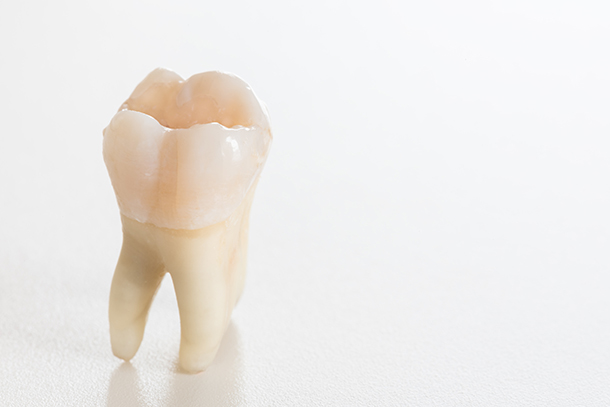The lower two-thirds of a tooth are known as the root. Normally covered in bone, they anchor the tooth into the jaw.
But the exact mechanisms and pathways that create the root — and its delicate interactions with the rest of the tooth — have not been well studied.
Herman Ostrow School of Dentistry of USC Associate Dean of Research Yang Chai, DDS, PhD, aims to change that as he embarks on an investigation to better understand the ways in which stem cells function to create a tooth, thanks to a National Institutes of Health grant totaling $2.6 million.
“The root provides critical support for our teeth and integrates our dentition into our jawbone,” Chai said. Teeth develop in utero: by the time a fetus is six weeks old, the tooth buds of baby teeth can be discerned; by 14 weeks, the tooth buds of permanent teeth are visible. It’s known that the crowns (top parts) of teeth develop first, and later the root — but overall little is known about this process.
Six years ago, Chai started to dig into the research. His group was able to identify stem cells that are important for the initiation of root development and learned some of the key signaling molecules that signal stem cells how and where to form a root.
Right now, if someone is missing a tooth, they generally get a titanium implant. The post of the implant has to fuse with the jaw bone. “Our natural dentition, on the other hand, is very different,” he explained, adding that the tooth is suspended into jawbone by ligaments.
That means that when you bite into something hard like an ice cube or a peanut, you use more force than if you are biting into a piece of cake. Teeth have nerve endings that give signals to your brain between soft and hard. “Dental implants don’t have that natural component,” he added. Over time, this could cause implants to be damaged. Eventually, dentists may be able to use stem cells to regrow roots, giving people that ability — even with implants. Other researchers have already been able to regrow roots in miniature pigs.
The grant will allow Chai to continue investigating molecular signaling and stem cells during root formation. His group uses transgenic mice to identify the stem cells central to the tooth root process. “The mouse model has development nearly identical to humans, so we can use this to glean information about how nature has put together this blueprint to build roots,” Chai said.
His group hopes to better understand a wide range of questions, like why there are two roots in the first molar on the bottom jaw, but three roots in the first molar on the top jaw?
Chai also looks to evolutionary questions: Neanderthals lived 50,000 years ago, and they had long tooth roots, but very little separation on the ends of their tooth. Modern humans have a much smaller jaw size. Chai added, “An open question is how dietary changes and the environment make genes to turn on and off in root development.”
— Katharine Gammon


